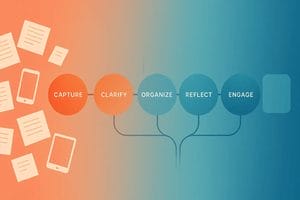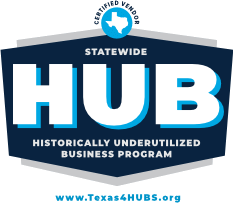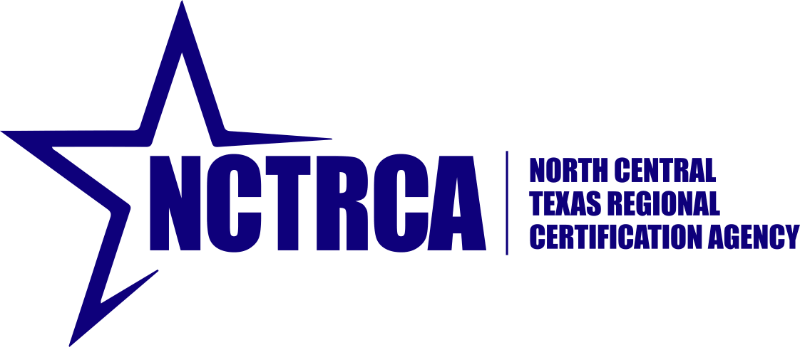TL;DR: This comprehensive guide explores the three core executive functions most challenging for ADHD leaders: working memory, impulse control, and cognitive flexibility. Learn evidence-based strategies to transform these potential challenges into leadership advantages, including implementation frameworks, environmental modifications, and coaching approaches that leverage the unique strengths of the ADHD brain while supporting areas of difficulty.
The Executive Function Challenge for Leaders with ADHD
As I sat across from a brilliant technology CEO during a coaching session, he shared a frustration that resonated deeply with my own experience: “I can see the big picture clearer than anyone in my organization. I can solve complex problems others have struggled with for months. But then I’ll walk out of a meeting having forgotten three commitments I just made, or I’ll interrupt at exactly the wrong moment, or I’ll get so fixated on one approach that I miss an obvious alternative.”
This paradox sits at the heart of leadership with ADHD. The same brain wiring that can create extraordinary capabilities in innovation, crisis management, and creative problem-solving often presents challenges in the executive functions that support day-to-day leadership effectiveness.
Through my years coaching executives with ADHD, I’ve found that three core executive functions present both the greatest challenges and the most significant opportunities for transformation: working memory, impulse control, and cognitive flexibility. When leaders develop strategies to strengthen these areas, they don’t just compensate for challenges—they often discover unique advantages that enhance their leadership effectiveness.
Understanding Executive Functions in the ADHD Brain
Before diving into specific strategies, it’s important to understand what executive functions are and how they’re affected by ADHD. Executive functions are the cognitive processes that help us plan, focus attention, remember instructions, juggle multiple tasks, and regulate our behavior. They’re essentially the “management system” of the brain.
Research from the National Institutes of Health indicates that ADHD involves differences in brain development and activity, particularly in areas responsible for executive functions. These differences aren’t deficits in intelligence or capability—they’re variations in how the brain processes and manages information.
For leaders with ADHD, these differences can manifest in several ways:
Working memory challenges may make it difficult to hold multiple pieces of information in mind while using them, affecting everything from meeting participation to strategic planning.
Impulse control variations can lead to interrupting others or making quick decisions without full consideration, though they can also enable decisive action in crisis situations.
Cognitive flexibility differences might make transitions between tasks or perspectives challenging, while potentially enhancing hyperfocus and deep expertise in areas of interest.
As explored in our article on Leading with ADHD – Executive Coaching Strategies for Leadership Excellence, these executive function differences shape both the challenges and strengths of ADHD leaders. The key is developing strategies that work with your brain’s natural wiring rather than against it.
Working Memory: From Challenge to Leadership Asset
Working memory is our brain’s ability to hold information temporarily while working with it. Think of it as your mental workspace—the cognitive equivalent of having multiple documents open on your computer desktop that you’re actively using.
How Working Memory Challenges Manifest in Leadership
For executives with ADHD, working memory challenges can appear in several ways:
- Forgetting commitments made during meetings or conversations
- Losing track of complex discussions, especially when multiple viewpoints are being shared
- Difficulty maintaining awareness of multiple projects simultaneously
- Challenges with sequential tasks that require remembering multiple steps
- Inconsistent follow-through on intentions and plans
A financial services executive I coached described it perfectly: “I’ll have a brilliant insight during a meeting, but by the time there’s a pause in the conversation, I’ve forgotten what I wanted to say. Or I’ll make a commitment to a team member and then completely forget about it—not because I don’t care, but because it literally disappeared from my mental workspace.”
Strategies to Strengthen Working Memory
Through years of coaching executives with ADHD, I’ve found several approaches that can transform working memory from a challenge to an asset:
1. External Memory Systems
The most effective strategy is often creating reliable external systems that reduce demands on working memory:
- Digital capture tools like note-taking apps that sync across devices
- Visual management systems that make information visible rather than hidden
- Voice memo capabilities for capturing thoughts on the go
- Dedicated executive assistant support focused on commitment tracking
A technology leader I worked with developed what he called his “second brain”—a digital system that captured all commitments, ideas, and follow-ups in one searchable place. “I stopped trying to remember everything,” he explained, “and instead focused on having a reliable system for capturing and retrieving information when needed.”
2. Meeting Effectiveness Protocols
Since meetings often present significant working memory challenges, specific protocols can make a dramatic difference:
- Pre-meeting preparation with structured review of relevant information
- Active note-taking during meetings, even for information you think you’ll remember
- Immediate post-meeting processing to capture commitments and insights
- Meeting summaries and action items documented and shared
One healthcare executive transformed her meeting effectiveness by implementing a simple “bookend” practice—five minutes of preparation before each meeting and five minutes of processing afterward. “This small change has dramatically improved my ability to contribute effectively and follow through on commitments,” she shared.
3. Strategic Information Chunking
Working memory capacity can be extended by organizing information into meaningful chunks:
- Creating mental frameworks for organizing complex information
- Using visualization techniques to enhance memory
- Developing mnemonic devices for important sequences or lists
- Breaking complex projects into distinct components
A marketing director I coached used what she called “visual story mapping” to enhance her working memory during strategic planning. By creating visual representations of complex plans, she could hold more information in mind and make connections that others missed.
4. Environmental Modifications
The physical and digital environment can either support or tax working memory:
- Reducing unnecessary distractions during high working memory tasks
- Creating visual cues for important information
- Using physical space to organize information (e.g., dedicated project areas)
- Implementing notification systems for time-sensitive commitments
“I redesigned my office to support my brain,” explained a financial analyst I coached. “Important projects are visually represented on my walls, my digital workspace is organized to minimize distractions, and I have systems that remind me of commitments at the right time and place.”
The Working Memory Advantage
When properly supported, what appears as a working memory challenge can become a leadership asset. Many executives with ADHD excel at:
- Distilling complex information to its essential elements
- Focusing intensely on what’s most important rather than trying to hold everything in mind
- Creating innovative systems that benefit the entire organization
- Delegating effectively by necessity, often leading to stronger team development
As one CEO put it: “I’ve built an organization that doesn’t depend on my memory—it depends on systems that make information visible and accessible to everyone. What started as a compensation strategy for my ADHD has become a competitive advantage for our entire company.”
Impulse Control: From Reactivity to Responsive Leadership
Impulse control involves the ability to think before acting, to resist temptations or impulses, and to consider consequences before making decisions. For many leaders with ADHD, variations in impulse control can present both challenges and unique strengths.
How Impulse Control Differences Manifest in Leadership
Executives with ADHD may experience impulse control differences in several ways:
- Speaking up with ideas before fully forming them
- Interrupting others in conversations or meetings
- Making quick decisions without full consideration
- Difficulty waiting for others to complete tasks or processes
- Emotional reactivity in high-pressure situations
A technology executive I worked with described his experience: “My mind works quickly, and I see connections immediately. The challenge is that I sometimes respond or make decisions before others have finished processing. What feels like efficiency to me can feel like impulsivity to others.”
Strategies to Enhance Impulse Control
Through coaching partnerships with ADHD leaders, I’ve identified several approaches that transform impulse control from a potential liability to a leadership strength:
1. Strategic Pausing Techniques
Creating intentional pauses between stimulus and response can dramatically improve impulse control:
- The 5-second rule – counting to five before responding in important conversations
- Physical cues like touching a ring or watch as a reminder to pause
- Note-taking as a pause mechanism during meetings and discussions
- Breathing techniques that create space between thought and action
A senior executive I coached developed what she called her “pause practice”—a simple breathing technique she used before responding in high-stakes situations. “This tiny pause gives me just enough space to choose my response rather than react automatically,” she explained. “It’s transformed my leadership presence.”
2. Decision-Making Frameworks
Structured approaches to decision-making can provide guardrails without stifling the ADHD brain’s natural quickness:
- Decision matrices for important choices
- Pre-committed criteria for different types of decisions
- Designated reflection periods for significant decisions
- Consultation protocols for decisions above certain thresholds
One financial services leader created a simple framework that helped him distinguish between decisions that benefited from his quick thinking and those that required more deliberation. “I categorize decisions as ‘quick,’ ‘considered,’ or ‘consultative,'” he shared. “This simple system helps me leverage my decisive nature while ensuring important decisions get appropriate reflection.”
3. Communication Protocols
Specific communication practices can help channel the ADHD leader’s quick thinking in productive ways:
- “Parking lot” systems for capturing tangential ideas during meetings
- Designated devil’s advocate roles that create space for constructive challenge
- Structured turn-taking in important discussions
- Feedback loops that provide information about communication impact
A marketing director implemented what she called “idea capture cards” during team meetings. “When an idea strikes me that’s not directly relevant to the current discussion, I quickly jot it on a card rather than interrupting. This allows me to honor my brain’s connections without derailing the conversation.”
4. Environmental and Physiological Support
The physical environment and physiological state significantly impact impulse control:
- Regular physical activity to regulate the ADHD nervous system
- Adequate sleep and nutrition to support executive function
- Mindfulness practices that build awareness of impulses
- Medication when appropriate as part of a comprehensive approach
“I schedule my most important meetings after my morning workout,” explained a technology leader I coached. “The exercise regulates my nervous system and dramatically improves my ability to listen fully before responding.”
The Impulse Control Advantage
When properly channeled, what appears as impulse control challenges can become significant leadership assets:
- Decisive action in crisis situations
- Authentic communication that cuts through corporate politics
- Creative thinking that isn’t constrained by conventional approaches
- Entrepreneurial risk-taking that leads to innovation
As explored in our article on Emotional Intelligence on Overdrive – ADHD Coaching for Better Emotional Regulation in Leadership, many ADHD leaders develop exceptional emotional intelligence precisely because they’ve had to become aware of and manage their impulses.
One CEO I worked with came to recognize his quick decision-making as a strategic advantage in his fast-moving industry. “In crisis situations, my ability to assess information quickly and act decisively is exactly what’s needed,” he noted. “The key was learning when to leverage this ability and when to intentionally slow down.”
Cognitive Flexibility: From Fixed Focus to Adaptive Leadership
Cognitive flexibility is the ability to adapt our thinking and behavior in response to changing situations. It involves shifting perspectives, adjusting to new rules or demands, and considering multiple aspects of a situation simultaneously.
How Cognitive Flexibility Differences Manifest in Leadership
For executives with ADHD, cognitive flexibility differences can appear as:
- Difficulty transitioning between different types of tasks
- Getting “stuck” on particular approaches or solutions
- Challenges shifting from big-picture thinking to details (or vice versa)
- Hyperfocus that makes it hard to zoom out when needed
- Resistance to changing plans once they’re in motion
A healthcare executive described her experience: “When I’m deeply engaged in strategic work, I can find it almost physically painful to shift to administrative tasks. Or I’ll become so convinced of a particular approach that I have trouble seeing alternatives, even when they’re right in front of me.”
Strategies to Enhance Cognitive Flexibility
Through my coaching practice, I’ve identified several approaches that help ADHD leaders transform cognitive flexibility challenges into adaptive leadership strengths:
1. Transition Management Techniques
Intentional approaches to transitions can significantly improve cognitive flexibility:
- Transition rituals that signal shifts between different types of work
- Buffer time between activities to allow for mental gear-shifting
- Visual cues that support context changes
- Physical movement during transitions to reset the brain
A financial services leader I coached developed what he called “transition bridges”—short rituals that helped him move between different types of work. “I take three deep breaths, jot down any loose ends from the previous task, and briefly visualize what I’m moving into,” he explained. “This simple practice has transformed my ability to shift gears effectively.”
2. Perspective-Taking Practices
Deliberate perspective-taking exercises can enhance cognitive flexibility:
- “Six thinking hats” technique for considering multiple viewpoints
- Structured devil’s advocate practices within leadership teams
- Scenario planning that explores multiple possible futures
- Regular exposure to diverse viewpoints and approaches
One technology leader implemented what she called “perspective rounds” in her team’s decision-making process. “Before finalizing any important decision, we explicitly consider it from multiple stakeholder perspectives. This practice has not only improved our decisions but has also enhanced my ability to shift viewpoints more naturally.”
3. Work Structure and Scheduling
How work is structured and scheduled can either support or hinder cognitive flexibility:
- Task batching of similar activities to reduce transition demands
- Alternating between different types of work based on brain state
- Scheduling flexibility that allows for following energy and focus
- Buffer time in schedules to accommodate transition needs
“I completely redesigned my calendar,” shared a marketing executive I coached. “Instead of scheduling different types of work throughout the day, I batch similar activities and build in transition time. This approach has dramatically improved both my productivity and my ability to shift focus when needed.”
4. Team Complementarity
Building teams with complementary cognitive styles can leverage ADHD strengths while supporting areas of challenge:
- Partnering with detail-oriented team members
- Creating thinking partnerships that balance different cognitive styles
- Explicit role definition that leverages natural strengths
- Collaborative workflows that distribute cognitive demands
A CEO I worked with deliberately built what he called “cognitive diversity” into his leadership team. “I’ve surrounded myself with people who think differently than I do,” he explained. “When I get stuck in one perspective, they naturally offer alternatives that help me shift my thinking.”
The Cognitive Flexibility Advantage
When properly supported, what appears as cognitive flexibility challenges can become remarkable leadership assets:
- Deep expertise and insight through hyperfocus on important areas
- Passionate commitment to vision and direction
- Consistency and follow-through on strategic priorities
- Specialized knowledge that creates competitive advantage
As one executive put it: “My ability to focus deeply on problems that interest me is what’s made me successful. The key was building systems and teams that support me in shifting focus when needed, while allowing me to leverage my natural tendency toward deep engagement.”
The Executive Function Integration Framework for ADHD Leaders
While we’ve explored working memory, impulse control, and cognitive flexibility separately, in practice these executive functions work together as an integrated system. The most effective approach for ADHD leaders involves developing strategies that address all three areas in a coordinated way.
The Three-Level Integration Approach
Based on my work with hundreds of executives through our ADHD Coaching for Executive & Professional Success program, I’ve developed a three-level framework for executive function integration:
Level 1: Personal Practices
These are daily habits and approaches that strengthen executive function:
- Morning preparation ritual that includes reviewing priorities and commitments
- Regular physical activity to support overall executive function
- Mindfulness practices that build awareness and cognitive control
- Energy management throughout the day
- Evening reflection to capture insights and prepare for the next day
A technology leader I coached developed what he called his “executive function maintenance plan”—a set of daily practices that kept his brain operating at its best. “Just like I maintain my car or my home, I’ve learned that my brain needs regular maintenance to perform optimally,” he explained.
Level 2: Systems and Structures
These are the external systems that reduce demands on executive function:
- Comprehensive information management system
- Calendar and task management approach
- Environmental modifications at work and home
- Technology tools that extend executive function
- Administrative support structured to complement executive function needs
“I stopped trying to fix my brain and started building systems that work with it,” shared a financial executive. “My entire productivity approach is now built around externalized systems that complement my natural thinking style.”
Level 3: Relationship and Team Dynamics
These involve how you work with others to leverage strengths and support challenges:
- Strategic partnerships with complementary thinking styles
- Communication protocols within teams
- Delegation approaches that leverage team strengths
- Feedback loops that provide awareness of blind spots
- Leadership team composition that ensures cognitive diversity
A healthcare CEO transformed her effectiveness by deliberately building what she called “executive function partnerships” throughout her organization. “I’ve created relationships where different cognitive styles complement each other,” she explained. “This approach has not only made me more effective but has created a more innovative and adaptive organization.”
The Executive Function Self-Assessment
To help you identify your specific executive function profile as a leader, consider the following self-assessment. Rate each statement on a scale from 1 (rarely true) to 5 (almost always true):
Working Memory
- I can hold multiple pieces of information in mind while working with them.
- I remember commitments made during meetings without having to write them down.
- I can follow complex discussions without losing track of key points.
- I maintain awareness of multiple projects simultaneously without dropping balls.
- I follow through consistently on intentions and plans.
Impulse Control
- I think before speaking in important conversations.
- I rarely interrupt others during discussions.
- I consider multiple factors before making significant decisions.
- I can wait patiently when processes take time to unfold.
- I respond thoughtfully rather than reactively in high-pressure situations.
Cognitive Flexibility
- I transition smoothly between different types of tasks.
- I consider alternative approaches when my initial solution isn’t working.
- I shift easily between big-picture thinking and detailed focus.
- I can disengage from deep work when necessary.
- I adapt readily when plans need to change.
Scoring:
- 20-25 in any area suggests this executive function is a natural strength
- 15-19 suggests moderate challenges that benefit from intentional strategies
- Below 15 indicates an area where more comprehensive support systems would be beneficial
This assessment isn’t diagnostic but can help you identify which executive functions might benefit most from the strategies we’ve discussed.
Coaching Approaches for Executive Function Development
As a coach working with ADHD leaders, I’ve found that certain coaching approaches are particularly effective for developing executive function capabilities. These approaches differ from traditional coaching in several important ways:
1. Strengths-Based Assessment
Effective coaching begins by identifying how executive function differences manifest as both challenges and strengths. Rather than focusing solely on deficits, this approach explores how the ADHD brain’s unique wiring creates both obstacles and opportunities.
A technology executive I coached discovered that her working memory challenges had led her to develop exceptional skills in creating visual information systems. “What started as a compensation strategy has become one of my greatest leadership strengths,” she realized. “I create clarity for my entire organization.”
2. Personalized Strategy Development
Cookie-cutter approaches rarely work for ADHD leaders. Effective coaching involves co-creating strategies that align with the individual’s:
- Natural thinking style and preferences
- Specific role demands and challenges
- Organizational context and resources
- Existing strengths and capabilities
“What transformed my leadership wasn’t trying to become like everyone else,” shared a financial services executive. “It was developing approaches that worked with my brain rather than against it.”
3. Implementation Support and Accountability
Perhaps the most crucial element of executive function coaching is providing structured support for implementation. This includes:
- Breaking changes into manageable steps
- Creating accountability structures
- Troubleshooting obstacles as they arise
- Celebrating progress and successes
As explored in our article on Productivity Unleashed – ADHD Coaching Tips to Boost Productivity for Busy Professionals, accountability and implementation support are often the missing pieces that allow new strategies to become sustainable habits.
4. Environmental Optimization
Effective coaching includes helping leaders optimize their physical and social environments to support executive function:
- Physical workspace design
- Digital environment structuring
- Meeting and communication protocols
- Team composition and dynamics
A marketing director I worked with transformed her effectiveness by redesigning both her physical office and her digital workspace. “These environmental changes reduced the executive function demands on my brain,” she explained, “freeing up mental resources for the strategic thinking that’s my greatest strength.”
5. Integration with Whole-Person Development
Executive function coaching is most effective when integrated with broader leadership development. This includes:
- Aligning strategies with personal values and purpose
- Addressing emotional aspects of executive function challenges
- Connecting executive function development to career goals
- Supporting work-life integration
As detailed in our article on The Work-Life Harmony Blueprint – ADHD Coaching for Work-Life Integration and Balance, sustainable executive function development requires a holistic approach that addresses all aspects of a leader’s life.
Case Study: Transforming Leadership Through Executive Function Development
To illustrate how these approaches work in practice, consider this composite case study based on several executives I’ve coached:
The Challenge: Michael, a brilliant technology CEO with ADHD, had built a successful company through his visionary thinking and problem-solving abilities. However, as the organization grew, his executive function challenges became more apparent. He struggled to keep track of commitments, often interrupted his leadership team in meetings, and had difficulty shifting from strategic work to operational details. These challenges were creating friction with his team and board, despite his undeniable strengths.
The Approach: Through our coaching partnership, Michael:
Assessment: Completed a comprehensive executive function assessment to identify specific strengths and challenges.
Working Memory Systems: Developed an external “second brain” system that captured all commitments and important information, supported by a skilled executive assistant.
Impulse Control Strategies: Implemented specific meeting protocols and communication practices that channeled his quick thinking while reducing interruptions.
Cognitive Flexibility Techniques: Created transition rituals between different types of work and built a leadership team with complementary cognitive styles.
Integration: Developed daily practices, environmental modifications, and team dynamics that supported all three executive functions in a coordinated way.
The Transformation: Within six months, Michael’s leadership effectiveness had dramatically improved. His team reported better meeting experiences, more consistent follow-through, and improved decision-making. Board feedback shifted from concerns about his “management style” to appreciation for his unique leadership approach. Most importantly, Michael himself felt more confident and less stressed.
“I’m still the same visionary thinker I’ve always been,” he shared, “but now I have systems and strategies that allow me to express that vision effectively while ensuring nothing falls through the cracks. I’m not trying to be a different kind of leader—I’m being the best version of my natural leadership style.”
Frequently Asked Questions
How do I know if my executive function challenges are related to ADHD or just normal leadership stress?
Executive function challenges exist on a spectrum, and everyone experiences them to some degree, especially under stress. What distinguishes ADHD-related executive function differences is their persistence across different situations and throughout life. If you’ve experienced working memory, impulse control, or cognitive flexibility challenges since childhood, if they appear in multiple contexts (not just at work), and if they persist even when stress is low, they may be related to ADHD. A professional evaluation can provide clarity, but regardless of the cause, the strategies we’ve discussed can help. Many executives I’ve coached found that implementing these approaches improved their leadership effectiveness whether or not they had a formal ADHD diagnosis.
Can executive functions actually improve with practice, or am I stuck with my current capabilities?
Research shows that executive functions can indeed improve with targeted strategies and practice. While there may be neurological differences in how the ADHD brain processes information, neuroplasticity—the brain’s ability to form new neural pathways—means that consistent practice of executive function skills can lead to meaningful improvements. However, the most effective approach typically combines skill development with environmental modifications and support systems. Rather than trying to “fix” executive function challenges through sheer effort, successful leaders create ecosystems that support their brain’s natural functioning while gradually strengthening specific capabilities through practice. This combined approach leads to sustainable improvement rather than exhausting compensation.
How do I balance authenticity as an ADHD leader with the need to manage executive function challenges?
This is perhaps the most important question for ADHD leaders. The goal isn’t to mask your natural thinking style or pretend to be neurotypical—it’s to express your authentic leadership while managing potential challenges. The most successful ADHD leaders I’ve coached are open about how their brains work differently (though not necessarily disclosing a diagnosis) and have developed systems that support their effectiveness. They view their executive function strategies not as “fixing” something broken but as tools that allow their natural strengths to shine. As one executive told me: “I’m not hiding my ADHD—I’m creating structures that let me be my best self as a leader.”
What's the relationship between executive functions and emotional regulation for ADHD leaders?
Executive functions and emotional regulation are deeply interconnected. Working memory helps us maintain perspective during emotional situations. Impulse control enables us to pause before reacting emotionally. Cognitive flexibility allows us to shift from an emotional reaction to a more balanced perspective. For many ADHD leaders, emotional intensity can be both a challenge and a strength—leading to passionate engagement but sometimes to reactivity. The strategies we’ve discussed for executive function development also support emotional regulation. Additionally, practices like mindfulness, physical exercise, and adequate sleep significantly impact both executive function and emotional regulation. Our article on Emotional Intelligence on Overdrive explores this connection in greater depth.
How do I help my team understand and work effectively with my executive function differences?
Open, non-defensive communication is key. You don’t need to disclose an ADHD diagnosis if you’re not comfortable doing so, but sharing your working style can be incredibly helpful. For example: “I process information most effectively visually, so I appreciate getting materials in advance,” or “I sometimes generate ideas rapidly, so please let me know if I’m moving too quickly.” Most importantly, demonstrate that you’re taking responsibility for your effectiveness by implementing strategies and systems. Teams are generally understanding of different working styles when leaders are self-aware and proactive. Many executives I’ve coached have found that being open about their thinking style actually strengthened team relationships and created space for others to share their own needs and preferences.
Your Next Step: From Insight to Action
Understanding executive functions is just the beginning—the real transformation comes through implementing targeted strategies and systems. If you recognize your experience in what we’ve discussed, consider these next steps:
Self-Assessment: Complete the executive function self-assessment to identify your specific profile of strengths and challenges.
Strategy Selection: Choose one strategy from each executive function area (working memory, impulse control, and cognitive flexibility) to implement over the next 30 days.
Environmental Review: Evaluate your physical and digital environments to identify modifications that could support your executive function.
Team Conversation: Consider having an open conversation with key team members about working styles and preferences.
Professional Support: Explore whether ADHD-informed executive coaching could accelerate your development in these areas.
At Tandem Coaching, we specialize in helping leaders with ADHD transform potential executive function challenges into distinctive leadership advantages. Our approach combines evidence-based strategies with personalized coaching to create sustainable change.
Ready to transform your executive function challenges into leadership strengths? Schedule a complimentary consultation to explore how ADHD-informed executive coaching can enhance your leadership effectiveness. During this session, we’ll discuss your specific challenges and goals, and determine if our approach aligns with your needs.
The most successful leaders don’t try to overcome their brain’s natural wiring—they develop strategies that work with it. Let’s discover how your unique thinking style can become your greatest leadership asset.
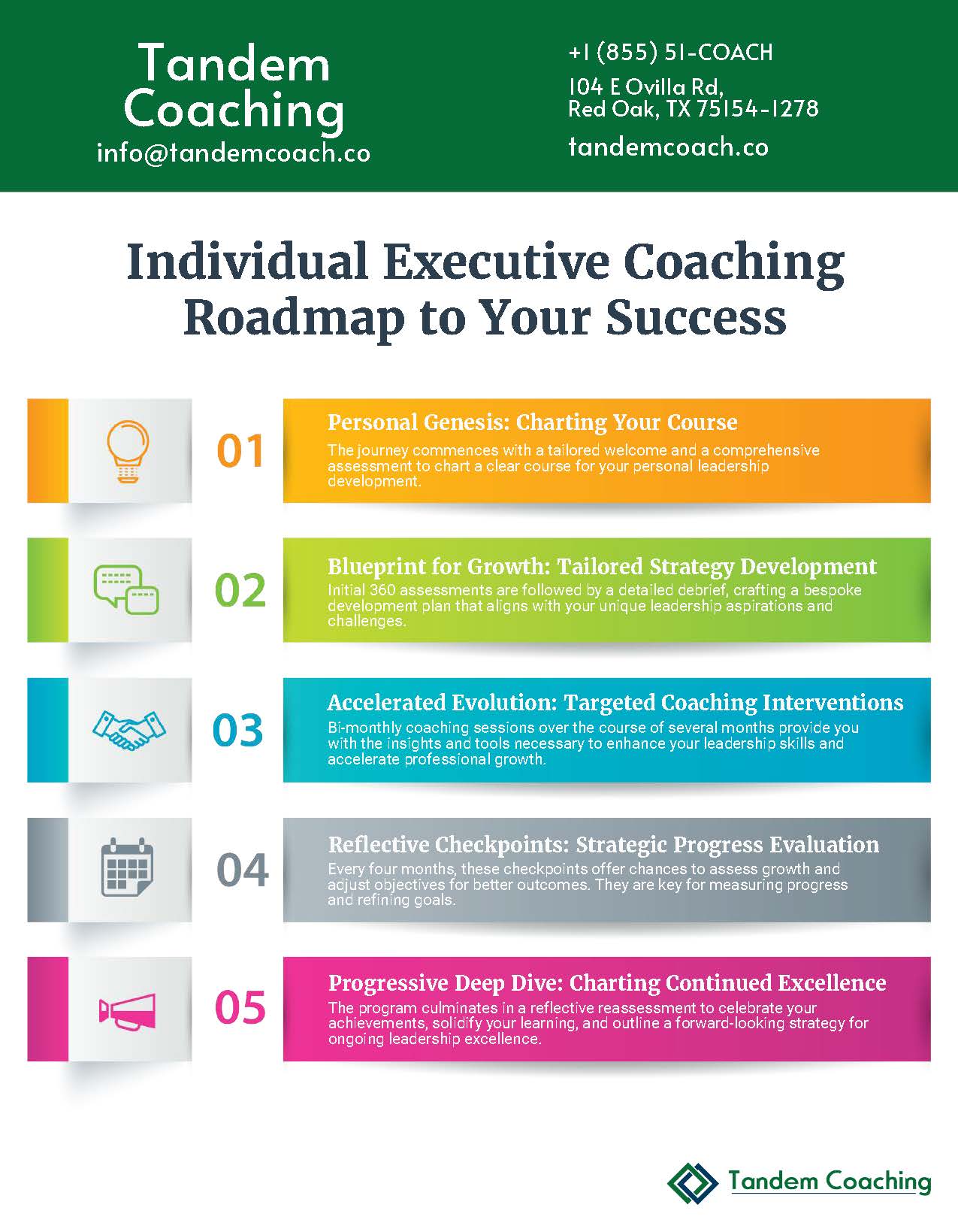
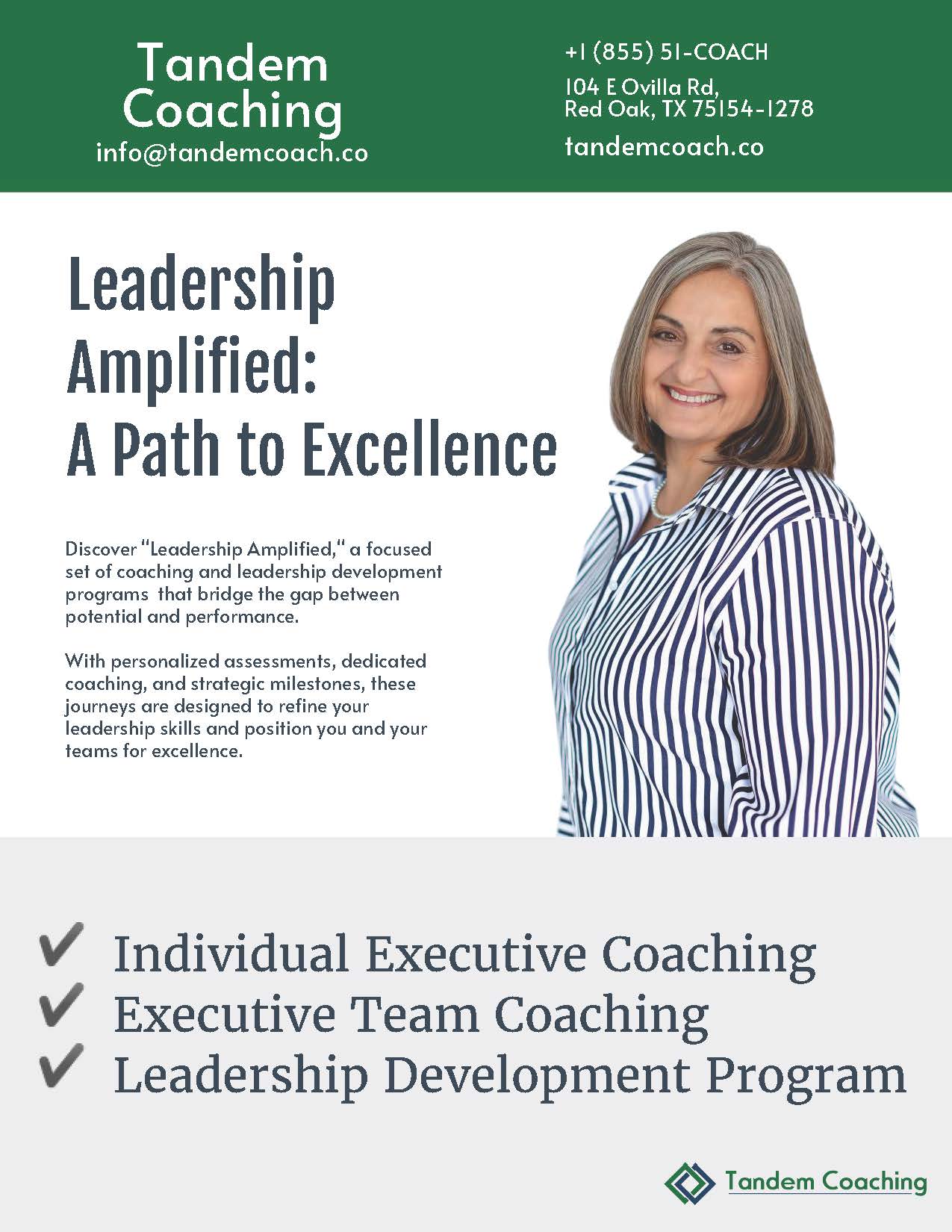
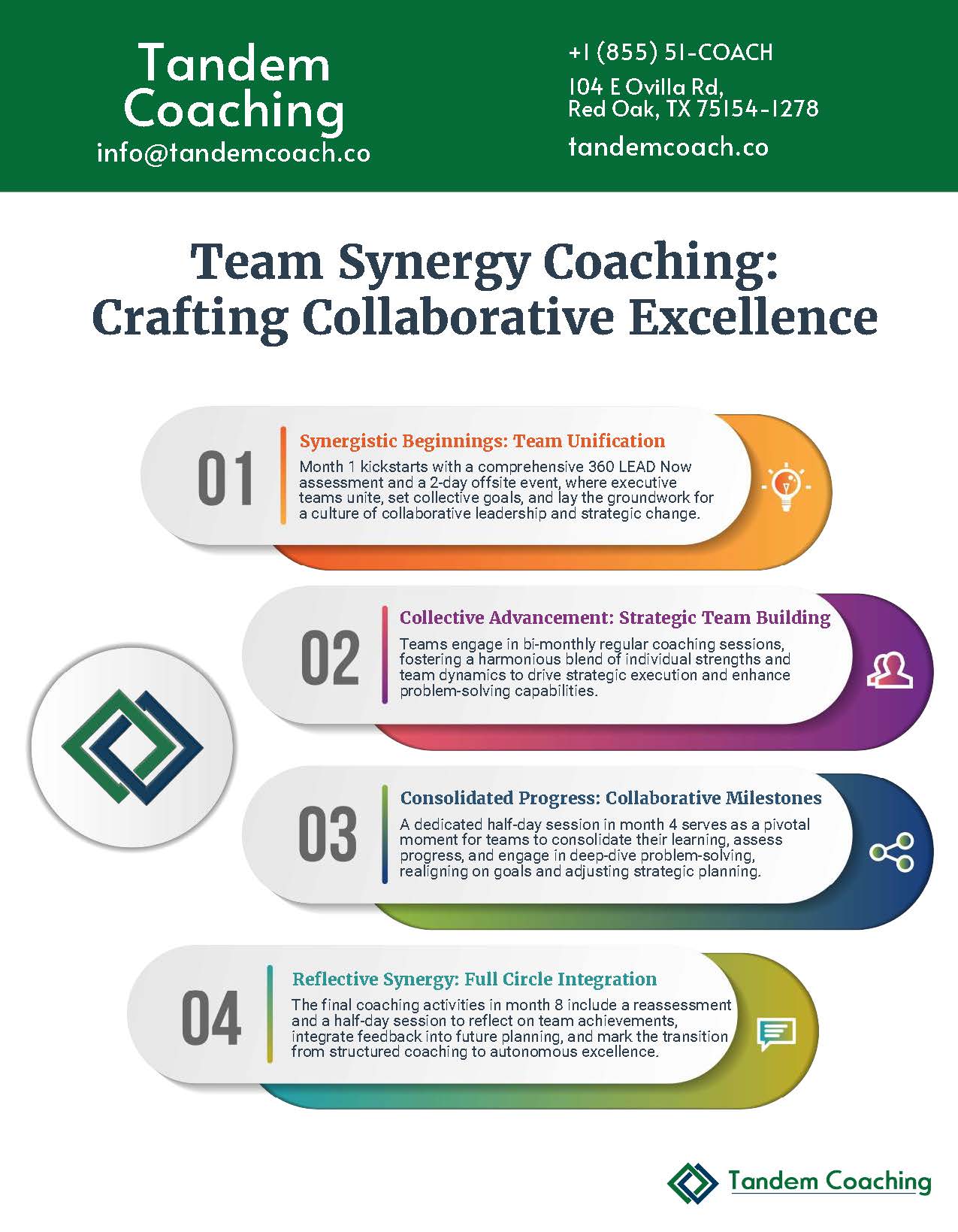
Boost Your Leadership Team Success!
Take your leadership team to the next level and achieve great results with our executive coaching.
Learn how our coaching and ASPIRE method can change things for you—get a free brochure to begin your journey.
About the Author
Cherie Silas, MCC
She has over 20 years of experience as a corporate leader and uses that background to partner with business executives and their leadership teams to identify and solve their most challenging people, process, and business problems in measurable ways.








